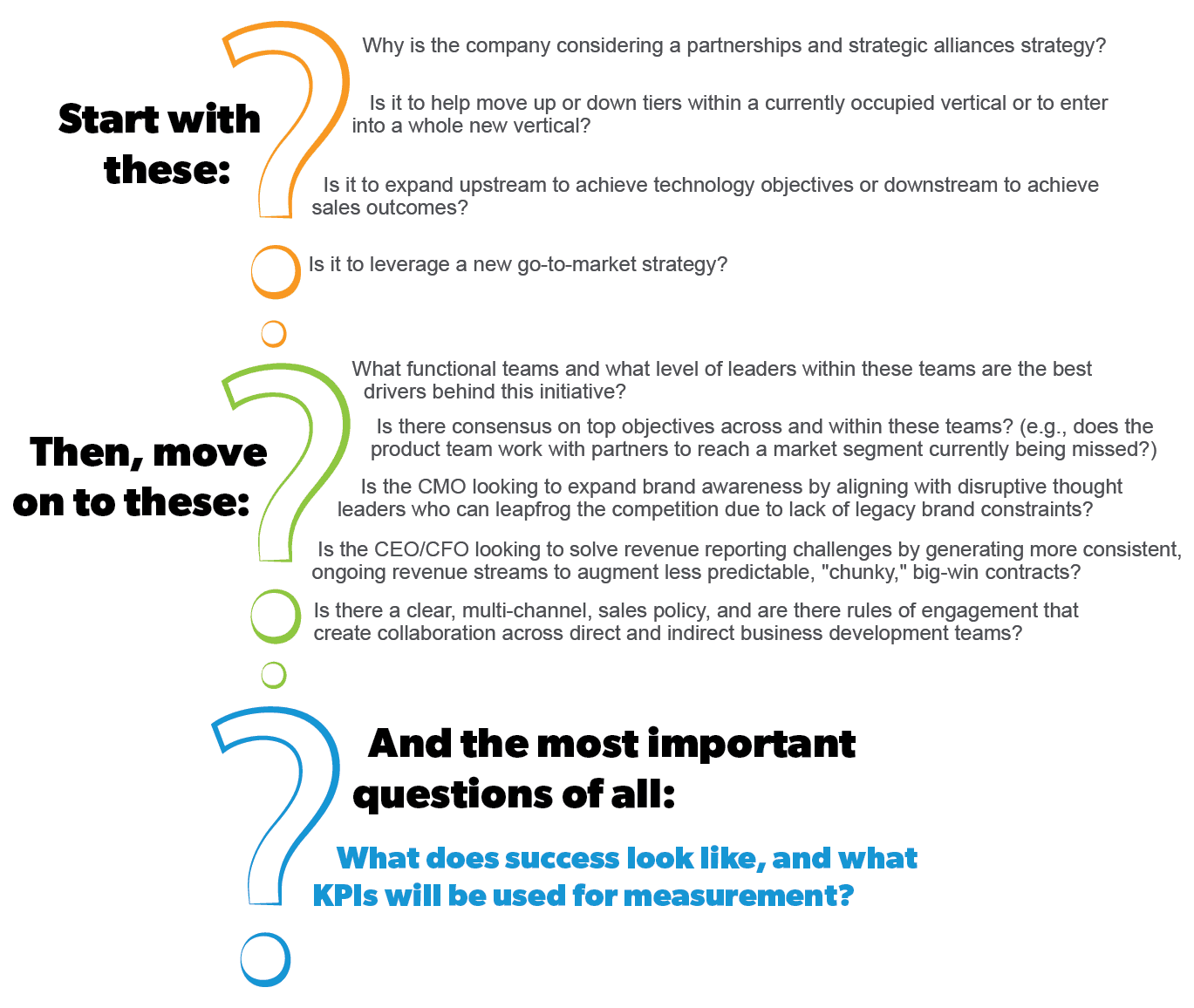When asked to write a blog on strategic partnerships and alliances, my first thought was to avoid creating yet another post regarding the five things that you absolutely must do (or never, ever do). I decided to try another approach to generate attention and start real conversation. And, because so much content is being shared every minute, I knew that I’d need a title that included the keywords deemed relevant by the search engines we rely on to filter our daily dose of content.
After consulting with my daughters, I thought I had the perfect title: How Taylor Swift and Partners Formed a Strategic Alliance!
But upon sober reflection, I reconsidered, knowing that I should focus on something I know about: How much more questioning and planning should go into initiating a strategic partnerships and alliances practice?
Fire, ready, aim!
Notice the keyword, more. If we’re talking about building strategic partnerships and alliances that really work, bring added value to customers, and benefit both partners, we need to do a lot more questioning and planning.
Just consider the inherent complexity of a strategic alliance, where one company’s product or service becomes part of a more robust, combined offering that is brought to market with collaborative sales efforts executed by one or both companies. Think about how many touch points the alliance creates across both teams: C-Level strategy, product development, user support, marketing strategy, product marketing communications—not to mention the complexities of incentivizing sales and rules of engagement for sales teams.
My path to wealth and fame. (Not!)
So I began my journey down multiple paths, reflecting upon my experience of working 10-plus years in a direct sales and marketing capacity as well as the last 20-plus years of building, managing, and optimizing global partnerships and alliances. I kept coming back to the key contributing attributes that were common among the successful endeavors and blatantly missing from the not-so-successful ones. I noticed these factors were frequently missing from the most widely followed, how-to (or how-not-to) content on those topics showing up in my inbox or content feed every day.
Could this be the controversial topic that would go viral and light the partnerships and alliances world’s Chatter, Twitter, and LinkedIn world on fire? I started planning my wardrobe for late-night TV appearances. Eat your hearts out, David Meerman Scott and Guy Kawasaki!
Thinking Clearly: The Foundation of a Successful Alliance
At the heart of all successful partnering initiatives is a firm understanding of the need to establish an alternative and/or complementary distribution channel, collaborative alignment on the objective across each organization’s functional areas, and an unwavering commitment from the organization’s C-level to see it through to success.
That’s too easy, right?
Wrong! Simple should not be confused with easy. And, you should understand that taking steps to build a strong foundation does not ensure reaching a successful outcome. Endless content has been written, PowerPoints suffered through, and associations formed that focus on the execution of building and maintaining world-class partnerships and alliances. But just like a house, you can’t successfully build if you don’t have the right foundation. It’s an absolute must for success. Begin building that foundation with the following questions.
Mind the gaps!
If you’re not getting the answers to these questions, you should take a step back and ask yourself why you don’t know the answers and then understand the consequences of not knowing. If you don’t first investigate these types of questions and build your foundation, your chances of success will be greatly diminished. In his recent article, Joe Kittel explains that strategic alliances are relationships between companies and amongst people and although the relationship part seems obvious, no one is dealing directly with it.
When faced with disruption and transformative change in products or business offerings, management must be able to move swiftly to stand up go-to-market strategies focused on delivering strategy execution. You can facilitate rapid and sustainable improvements and overcome limitations of legacy technology—and even corporate thinking—by creating and supporting a strong partnerships and strategic alliances practice.
But wait, there’s more!
You’ll then have a playbook to enable legacy organizations who need to bring innovative technology, products, or solutions to market but are challenged by current business models and, all too frequently, by their own blind spots. For example, the speed and velocity of transformation going on in today’s B2B buyer’s journey is creating dramatic shifts and attention to inside sales functions. But how often are the success factors that power cutting-edge technology providers the same ones that result in state-of-the-art sales effectiveness?
Look within, Grasshopper.
It is said that the heart of wisdom begins with self-knowledge. If we look at the landscape of alliances, we see that the most successful partners are the ones who are brutally honest with themselves and have a clear understanding of what they’re good at and of where they need help. But that landscape is also littered with the remains of partnerships that assumed success in their core functional area would translate into the execution excellence required at every step of the go-to-market value chain.
Successful partnering requires thinking ahead to define success metrics and ensure smooth transitions; the recognition of each organization’s key strengths and key functional gaps; and the mitigation of disruptive side-effects on ongoing revenue-generating activities.
At MarketSource, we create partnerships with world-class organizations, establishing managed outsourced inside and outside sales engagements to match today’s empowered B2B buyer’s journey. These partnerships are based on meeting the foundational expectations that were set when making the collaborative decision to initiate a focused strategic partnerships and alliance strategy. Our CEO sums it up well in his interview with Kathy Ireland featured on Worldwide Business.
By delivering a swift and seamless expression of your brand in support of critical business objectives, we can help you achieve better experiences, better relationships, and better sales. Contact us today for a MarketSource assessment, and let’s get started.


